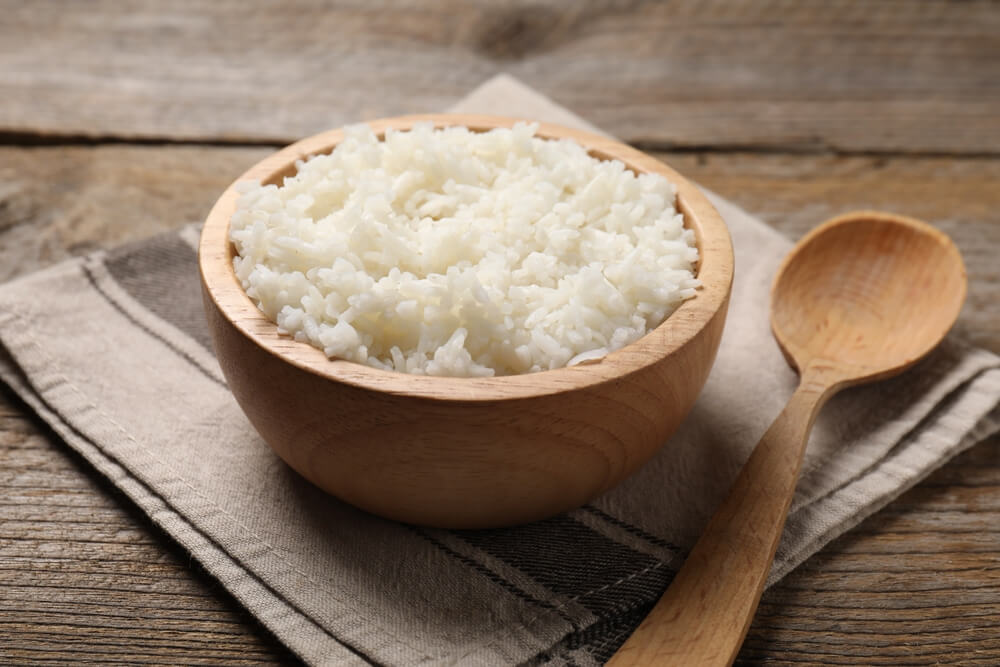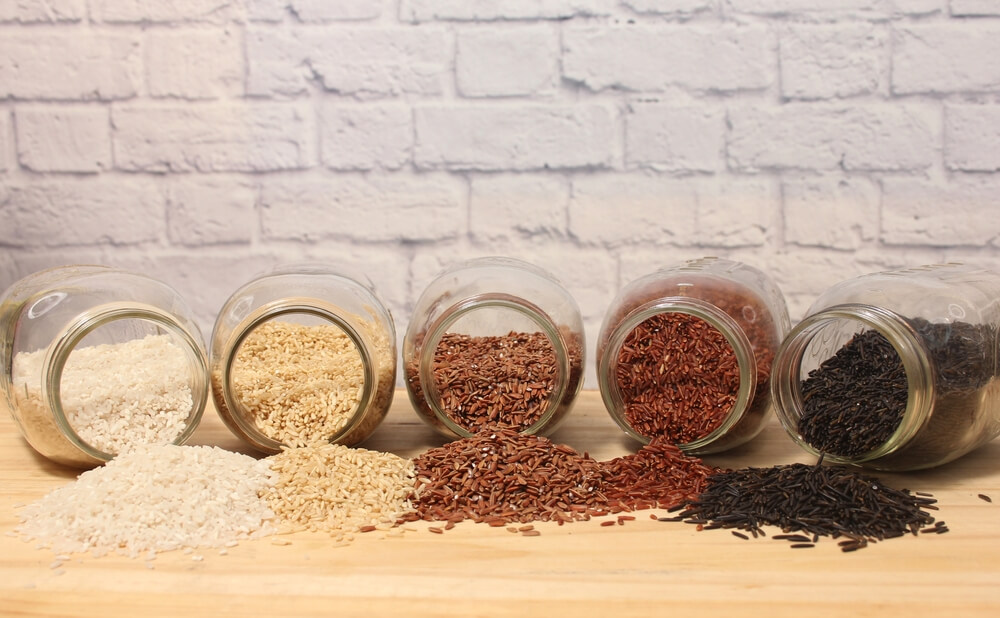
For those with celiac disease or gluten sensitivity, managing food choices can be challenging, especially with staples like rice. This guide clarifies rice’s gluten-free status and offers advice on avoiding cross-contamination in cooking. It explores different types of rice, and provides gluten-free alternatives for popular dishes. Whether newly diagnosed or expanding your culinary options, this guide supports a healthier lifestyle free from gluten concerns.
Understanding Gluten (What It Is and Why It Matters for Celiac Patients)
Gluten is a protein found in grains such as wheat, barley, and rye. It plays a crucial role in food production by giving dough its elasticity and helping it rise and maintain its shape. However, for individuals with celiac disease or gluten intolerance, gluten can pose significant health challenges.
Celiac disease is an autoimmune disorder where the ingestion of gluten leads to damage in the small intestine. For those affected, consuming even small amounts of gluten can trigger symptoms like abdominal pain, bloating, diarrhea, and fatigue. Over time, this can lead to more serious complications such as malnutrition and other autoimmune disorders.
For people with non-celiac gluten sensitivity or gluten intolerance, the symptoms may be similar but without the intestinal damage seen in celiac disease. Both conditions necessitate a strict adherence to a gluten-free diet to manage symptoms effectively.
A gluten-free diet involves avoiding all foods that contain wheat, barley, rye, and any derivatives of these grains. This means carefully reading labels on processed foods and being cautious when dining out to prevent cross-contamination.
Understanding what gluten is and recognizing its impact on those with celiac disease or gluten sensitivity is vital for managing these conditions effectively. By following a well-planned gluten-free diet, individuals can lead healthy lives without compromising their well-being.
Rice Varieties and Nutritional Information

Rice is a staple food for more than half of the world’s population, and its versatility makes it a beloved ingredient in countless dishes. Understanding the different types of rice and their nutritional profiles can help you make informed choices for your meals.
There are several varieties of rice, each with unique characteristics and nutritional benefits. White rice, one of the most common types, is known for its mild flavor and soft texture. However, it undergoes processing that removes the bran and germ layers, which reduces its fiber content and some nutrients.
Brown rice retains these layers, offering a chewier texture and a nuttier taste. It is considered more nutritious than white rice due to its higher fiber content and essential minerals such as magnesium and phosphorus.
Wild rice, though technically not true rice but rather seeds of aquatic grasses, offers an impressive nutritional profile. It is rich in protein and dietary fiber while being lower in calories compared to other varieties. Wild rice also provides essential vitamins like B vitamins and antioxidants that contribute to overall health.
Exploring different types of rice can enhance both your culinary experience and nutritional intake. Whether you choose white or brown rice for their distinct flavors or opt for wild rice nutrition benefits, incorporating various rice varieties into your diet can be both satisfying and healthful.
Is Rice Naturally Gluten-Free? Exploring the Facts
Rice is a staple food for millions around the globe, and its versatility and nutritional benefits make it a popular choice in various cuisines. For individuals with celiac disease or gluten sensitivity, understanding whether rice is naturally gluten-free is crucial. The good news is that rice, in its natural form, does not contain gluten. This makes it an excellent option for those seeking naturally gluten-free foods.
The question “is rice safe for celiacs?” often arises due to concerns about cross-contamination during processing or packaging. While rice itself has no gluten content, it’s essential to ensure that the brand you choose has been processed in a facility that prevents cross-contact with gluten-containing grains like wheat, barley, or rye.
For those adhering strictly to a gluten-free diet, varieties such as white rice, brown rice, jasmine rice, and basmati rice are all safe choices when sourced carefully. However, caution should be exercised with flavored or pre-packaged rice products as they may include additives or seasonings containing gluten.
Tips for Safe Rice Consumption
When it comes to enjoying rice safely, especially for those with celiac disease or gluten sensitivity, understanding how to prevent cross-contamination is crucial. Although rice is naturally gluten-free, it can become contaminated through contact with gluten-containing grains during processing or cooking. Here are some essential tips to ensure safe rice consumption.
Firstly, always purchase rice labeled as gluten-free. This ensures that the product has been processed in a facility that takes measures to prevent gluten contamination in rice. When preparing meals at home, dedicate specific kitchen tools and utensils for cooking gluten-free foods. This includes using separate pots, pans, and stirring spoons exclusively for your safe cooking practices for celiacs.
Another critical step is to thoroughly clean surfaces before and after handling food. Wipe down countertops and cutting boards regularly to remove any potential traces of gluten from previous meal preparations. Additionally, store your rice away from other grains like wheat or barley to minimize the risk of cross-contact.
Lastly, when dining out or ordering takeout, communicate clearly with restaurant staff about your dietary needs. Inquire about their procedures for preventing cross-contamination and choose establishments known for accommodating special diets.
Gluten-Free Alternatives to Common Rice Dishes
For those seeking gluten-free alternatives to common rice dishes, there are a plethora of options that maintain flavor and texture without compromising dietary needs. Rice is naturally gluten-free, making it a staple for celiacs and those with gluten sensitivities. However, incorporating alternative grains can diversify your meals and offer nutritional benefits.
- Quinoa: This protein-rich grain is an excellent substitute in dishes like pilafs or salads. Its nutty flavor pairs well with a variety of ingredients, providing a hearty base for many recipes.
- Millet: Often overlooked, millet is a versatile grain that can be used in place of rice in casseroles or as a side dish. It has a mild taste and fluffy texture when cooked properly.
- Buckwheat: Despite its name, buckwheat is naturally gluten-free and offers an earthy flavor profile perfect for savory dishes like stir-fries or risottos.
- Amaranth: Known for its slightly sweet taste, amaranth works well in breakfast bowls or as an accompaniment to spicy main courses.
- Sorghum: This ancient grain can be used similarly to rice in soups and stews due to its chewy texture and neutral taste.
By substituting wheat-based components with these alternative grains in your rice dishes, you not only cater to gluten-free diets but also introduce new flavors and textures that enhance the overall culinary experience.
Navigating Food Labels (How to Ensure Your Rice is Truly Gluten-Free?)
Navigating food labels can be a daunting task, especially for those with celiac disease who need to ensure their rice is truly gluten-free. Understanding how to read these labels is crucial in maintaining a gluten-free diet and avoiding any potential health risks.
First and foremost, look for the “certified gluten-free” label on rice packaging. This certification indicates that the product has been tested and meets strict standards set by organizations such as the Gluten-Free Certification Organization (GFCO). Products bearing this label are generally considered safe for celiac patients.
However, not all products will have this certification, so it’s essential to know how to identify hidden gluten in foods. Start by scrutinizing the ingredient list for any potential sources of gluten. Ingredients like wheat starch or malt flavoring should raise red flags, as they can contain gluten. Additionally, be cautious of terms like “natural flavors” or “spices,” which might occasionally include gluten-containing ingredients unless specified otherwise.
Cross-contamination is another concern when it comes to rice products. Even if rice itself is naturally gluten-free, it may be processed in facilities that handle wheat or other grains containing gluten. Look for statements on packaging that indicate whether a product was manufactured in a dedicated gluten-free facility or if precautions against cross-contamination were taken.
By being diligent about reading food labels and understanding what to look for, celiac patients can confidently select rice products that support their dietary needs while avoiding hidden sources of gluten.
Conclusion – Incorporating Rice into a Balanced Gluten-Free Diet Safely and Deliciously
Incorporating rice into a balanced gluten-free diet can be both safe and delicious, offering a versatile foundation for a wide array of meals. As one of the most widely consumed grains globally, rice provides essential nutrients such as carbohydrates for energy, along with vitamins and minerals like B vitamins, magnesium, and iron. For those adhering to a gluten-free lifestyle due to celiac disease or gluten sensitivity, rice serves as an excellent staple because it is naturally free of gluten.
To ensure that rice is incorporated safely into your diet, it is important to choose uncontaminated varieties. Opt for certified gluten-free brands when possible to avoid cross-contamination during processing. Additionally, consider diversifying your intake by exploring different types of rice such as brown rice, wild rice, or black rice.
Cooking methods can also enhance the safety and enjoyment of consuming rice. Rinse the grains thoroughly before cooking to remove excess starch and potential contaminants. Pairing rice with nutrient-dense foods like lean proteins, vegetables, and healthy fats will not only create balanced meals but also contribute to overall dietary variety.
By thoughtfully incorporating this versatile grain into your meals while being mindful of preparation techniques and potential cross-contamination risks, you can enjoy all the benefits that come with including rice in a well-rounded gluten-free diet.
